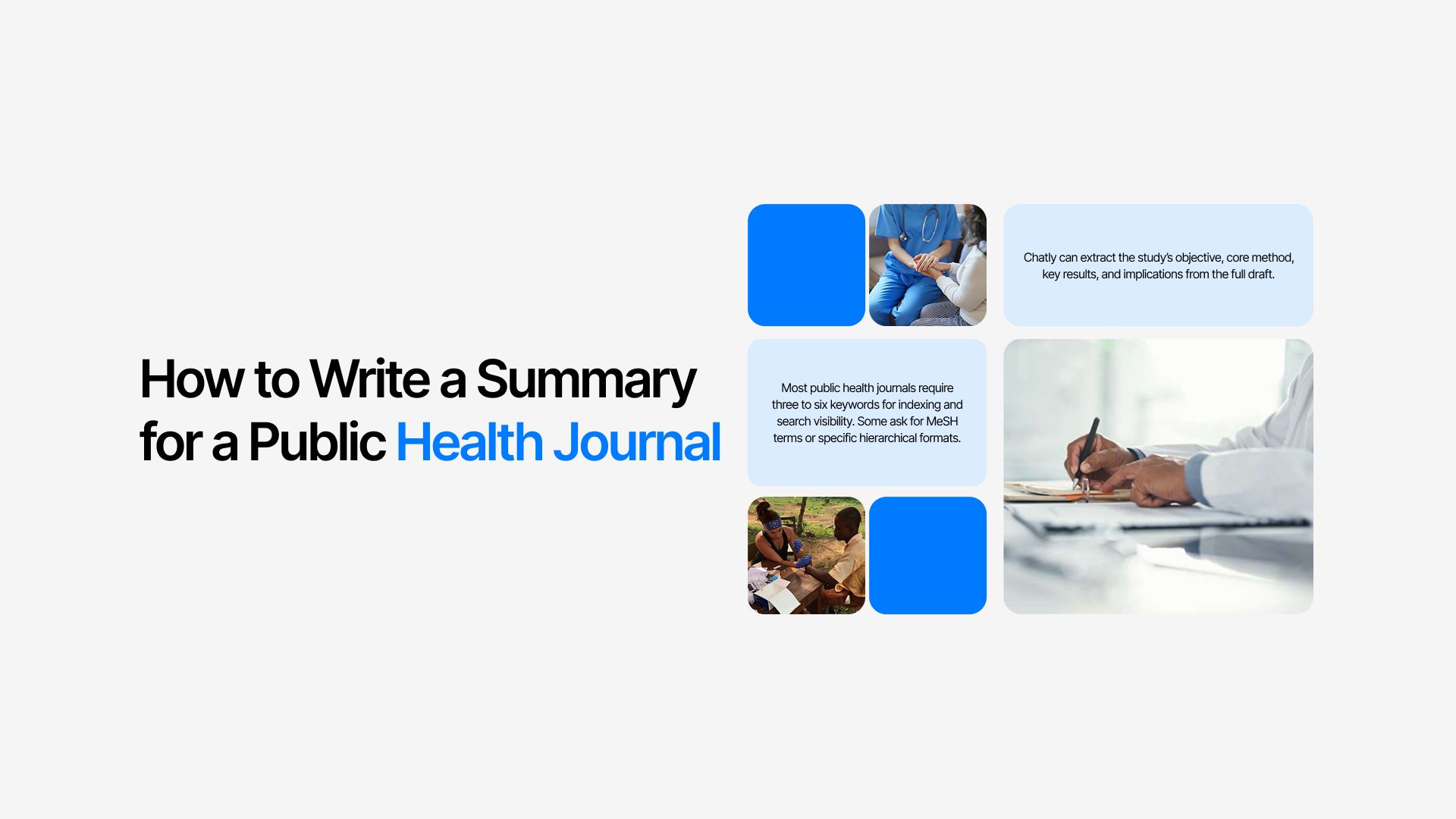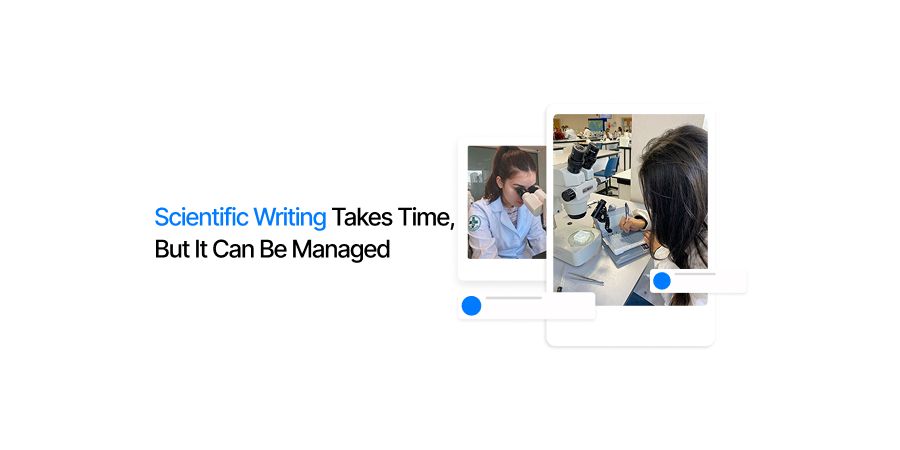
How Long Does It Take to Write a Scientific Article?
Writing a scientific article is more than just drafting content. It involves several stages, including research, data organization, feedback loops, journal formatting, and revisions. The time required varies depending on preparation, article type, and the number of contributors involved. An individual starting from scratch will progress at a different pace compared to someone with complete data, references, and a clear journal target.
Phases of Writing a Scientific Paper
A scientific paper progresses through various stages, and each stage requires its own set of tasks and timelines. The overall writing timeline depends on the readiness of data, collaboration, and journal-specific requirements. For some papers, the process takes a few weeks, while others may stretch over several months before submission.
How Long Does It Usually Take?
Realistic timeframes for drafting a full scientific article can vary based on preparation and collaboration:
-
If data and literature are already complete: First draft: 2 to 4 weeks for experienced writers working consistently.
-
If research and writing start together: Clean draft: 1 to 3 months.
-
For multi-author or supervisor-led papers: Co-author reviews and edits can add 2 to 6 extra weeks.
-
If journal formatting is handled late: Formatting, references, and compliance can add 1 to 3 weeks.
-
For early-stage researchers or first-time writers: Drafting can take 2 to 4 months due to uncertainty and revisions.
Factors Affecting the Timeline
Several factors influence how long it takes to write a scientific article:
- Data Readiness: Clean and analyzed data shortens drafting time. Unstable or incomplete data can add weeks.
- Study Type and Complexity: Cross-sectional surveys typically write faster than longitudinal trials or systematic reviews.
- Writing Experience: Experienced writers may complete drafts quicker by following proven structures.
- Number of Co-Authors: More co-authors increase review cycles, adding time.
- Journal Rules: Aligning your paper with the target journal's formatting and reference style early helps avoid last-minute work.
- Language and Clarity: Non-native English speakers may require extra passes to ensure clarity.
- Figures and Tables: High-quality visuals take time, requiring iterations for accuracy and readability.
- Approvals and Compliance: Ethics statements, data availability, and other compliance requirements may stall submission if not gathered early.
Stages of Writing and How Long Each One Takes
Assuming research is complete, a paper moves through these stages:
-
Scope, Target Journal, and Outline: Set the research question, choose the journal, and sketch headings with key points. This anchors length, tone, and citation depth. Typical time: 0.5 to 2 days.
-
Literature Consolidation and References: Confirm the latest studies, extract comparison numbers, and organize citations inside a reference manager. Typical time: 1 to 4 days, longer for reviews.
-
Methods Drafting: Describe design, participants, setting, variables, analysis plan, and ethics. Methods write quickly when notes are clean. Typical time: 1 to 3 days.
-
Results Drafting: Report primary outcomes, secondary outcomes, and sensitivity checks. Keep numbers precise and ordered by the analysis plan. Typical time: 2 to 5 days.
-
Figures, Tables, and Legends: Build visuals to journal size, color limits, and file specs. Write legends that make each asset interpretable on its own. Typical time: 1 to 4 days.
-
Discussion Drafting: Interpret findings, compare to prior work, explain strengths and limits, and outline implications. This section usually takes the longest. Typical time: 3 to 7 days.
-
Title, Abstract, and Keywords: Craft a clear title, a structured abstract, and search-friendly keywords. Revisit after co-author feedback. Typical time: 0.5 to 2 days.
-
Journal Formatting and Compliance: Apply word limits, section headers, citation style, figure callouts, and required statements. Typical time: 1 to 3 days.
-
Co-Author Review Cycles: Route the draft with deadlines. Consolidate comments once, then resolve conflicts in a single pass. Typical time: 1 to 3 weeks depending on team size.
-
Final Proofreading and Submission Pack: Run a technical proof, verify references, check file names, and complete forms. Submit only after a clean checklist pass. Typical time: 1 to 2 days.
Drafting vs. Publishing Timelines
Writing an article is only half the journey. Submission and publication follow a different clock. Many researchers underestimate this gap and assume the paper is “done” once a clean draft exists.
Drafting Timeline
The drafting phase covers everything from outline to final co-author approval. With completed data and a focused team, most articles fall into one of these bands:
-
Fast-track draft: 2 to 4 weeks
Feasible for small studies, single-author papers, or writers with strong templates. -
Standard draft: 4 to 8 weeks
Common for clinical research, multi-author manuscripts, or complex analysis. -
Extended draft: 2 to 4 months
Typically when data needs re-validation, teams are large, or writing is part-time.
Any delay in drafts usually comes from decision paralysis, unclear journal choice, or scattered feedback.
Publishing Timeline
Once submitted, the pace depends on journal process, reviewer speed, and revision demands.
-
Initial editorial check: 1 to 3 weeks
The editor screens scope, plagiarism, formatting, and fit. -
Peer review round 1: 4 to 12 weeks
Some journals respond in a month, others take a quarter. -
Minor revisions: 1 to 3 weeks
Limited edits, improved clarity, or format tweaks. -
Major revisions: 3 to 8 weeks
New stats, expanded discussion, or theory reframing. -
Acceptance and typesetting: 2 to 6 weeks
Proof corrections, layout adjustments, DOI assignment. -
Total post-submission range: 2 to 8 months
Fast-review journals and paid fast-track options can shorten this window, but academic norms still dominate the timeline.
How To Speed Up The Writing Phase Without Cutting Corners
Shortening the timeline is less about working faster and more about removing friction. Three areas create the biggest gains:
1. Preparation Before Drafting
- Finalize your target journal before writing a single line.
- Gather all references into a citation manager.
- List required visuals in advance.
- Confirm authorship order and responsibilities.
2. Structured Drafting Approach
- Use a fixed article template for IMRaD sections.
- Write methods and results first to anchor the discussion.
- Leave title and abstract for last.
- Block calendar time in 60–90 minute sessions.
- Create momentum by drafting sections in order of clarity, not order of appearance.
3. Tight Co-Author Management
- Share a version only when a full draft exists.
- Tell reviewers exactly what feedback you want.
- Set a hard return date for comments.
- Combine edits yourself instead of letting threads spiral.
Common Mistakes That ‘May Add’ Weeks To The Process
A predictable set of errors push manuscripts off schedule. Avoiding these leaves you with cleaner drafts and faster approvals:
-
Starting Without A Journal In Mind
Changing journals after drafting forces structural edits, word count cuts, reformatted references, and new keywords. -
Writing Without An Outline
Freestyle drafting leads to repetition, missed arguments, and uneven flow. Fixing structure after writing wastes days. -
Ignoring Figures Until The End
Results often depend on visual structure. Late creation means reshaping text around new layouts. -
Collecting Feedback Randomly
Uncoordinated edits create conflicting suggestions and duplicate comments. -
Leaving Ethics And Declarations For Later
Missing statements on funding, consent, or conflicts delays submission by a full round. -
Relying On Proofreading At The End Only
Cleaning poor wording, long sentences, and mixed tense is easier during each pass, not after the document is bloated.
Realistic Timeline Examples By Article Type
Different article types demand different levels of depth, coordination, and formatting. Timelines below assume data are ready and the target journal is known. Add more time for new analyses or large teams.
1. Original Research Article
- Writing: 4 to 8 weeks
- Internal reviews: 2 to 4 weeks
- Submission-ready total: 6 to 12 weeks
2. Brief Report or Short Communication
- Writing: 1 to 3 weeks
- Internal reviews: 1 to 2 weeks
- Submission-ready total: 2 to 5 weeks
3. Systematic Review or Meta-analysis
- Writing: 6 to 12 weeks
- Internal reviews: 3 to 6 weeks
- Submission-ready total: 9 to 18 weeks
4. Methods or Protocol Paper
- Writing: 3 to 6 weeks
- Internal reviews: 2 to 4 weeks
- Submission-ready total: 5 to 10 weeks
5. Case Study or Case Series
- Writing: 2 to 4 weeks
- Internal reviews: 1 to 2 weeks
- Submission-ready total: 3 to 6 weeks
6. Perspective, Commentary, or Policy View
- Writing: 1 to 2 weeks
- Internal reviews: 3 to 7 days
- Submission-ready total: 2 to 3 weeks
Submission Preparation Checklist
A smooth submission depends on tight files, clean metadata, and complete statements. Treat this as a pre-flight list to avoid instant admin delays:
Files And Formatting
- Final manuscript in journal template.
- Page, line numbers, and correct section order.
- Figures in required resolution and format.
- Tables in editable format with titles and notes.
- Supplementary materials labeled and referenced.
Compliance Statements
- Ethics approval and consent details.
- Trial registration and protocol identifiers.
- Data availability and code sharing notes.
- Funding, conflict of interest, and author contributions.
- Institutional approvals and acknowledgments.
References And Metadata
- Citation style aligned to journal rules.
- Reference manager fields complete and consistent.
- ORCID iDs for all authors.
- Keywords checked for indexing value.
Cover Letter Essentials
- One-paragraph study summary and main contribution.
- Fit with journal scope and audience.
- Statement of originality and preprint status if relevant.
- Suggested reviewers when allowed.
Administrative Readiness
- Corresponding author contact verified.
- All authors approved the final version.
- Submission portal fields prefilled and checked.
How Chatly Can Support Scientific Writing
Writing speed improves when structure, clarity, and coordination are handled early. Chatly AI Chat helps at each stage without changing your scientific voice:
Plan The Structure And Outline
- Supply the research question and target journal. Chatly can create a section-by-section outline with headings, subheadings, figure calls, and a reference plan.
Draft Clean Methods And Results
- Methods and results benefit from exact language. Chatly can compress procedural text, standardize terminology, and align result order with planned figures and tables.
Improve Clarity And Flow
- Long sentences hide key points. Chatly can tighten phrasing, fix tense inconsistencies, and remove repetition while keeping technical meaning intact.
Write Figure Legends And Table Notes
- Legends should stand alone. Chatly can draft clear, journal-compliant legends and harmonize abbreviations across visuals and text.
Manage Co-Author Collaboration
- Multiple reviewers create duplication. Chatly can consolidate tracked changes, flag conflicts, and produce a single, clean working version for sign-off.
Adapt To Journal Requirements
- A draft built for one journal rarely fits another. Chatly can adjust word counts, restructure abstracts, switch reference styles, and refine keywords for indexing.
Key actions that reduce writing time:
- Lock the outline and journal target before drafting.
- Draft methods and results first to anchor the paper.
- Set firm review deadlines for co-authors.
- Prepare references, figures, and disclosures during the writing phase.
Conclusion
A scientific article moves faster when the scope is fixed, the journal is selected early, and drafts follow a clear order. Timelines stretch when writers chase wording, wait on co-authors, or start formatting at the end. Writing time improves when each phase is treated as a separate task instead of one long push. The research drives the paper, but structure, timing, and coordination decide how quickly the final version gets submitted.
Suggested Reads
Frequently Asked Question
Here we have answered further questions you might have regarding follow-up emails after no response.
More topics you may like

11 Best ChatGPT Alternatives (Free & Paid) to Try in 2025 – Compare Top AI Chat Tools

Muhammad Bin Habib

28 Best AI Tools for Students in 2025 – The Complete AI-Powered Academic Success Guide

Muhammad Bin Habib

Best AI Writing Tools That You Can Use in 2025 (Free & Paid)

Muhammad Bin Habib

How to Become a Freelance Writer in 2025

Muhammad Bin Habib

24/7 Customer Support with AI Chat: Benefits, Examples and More

Muhammad Bin Habib
